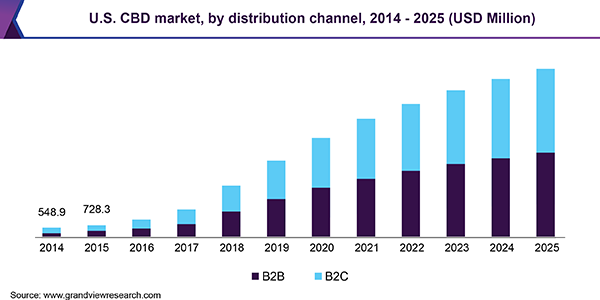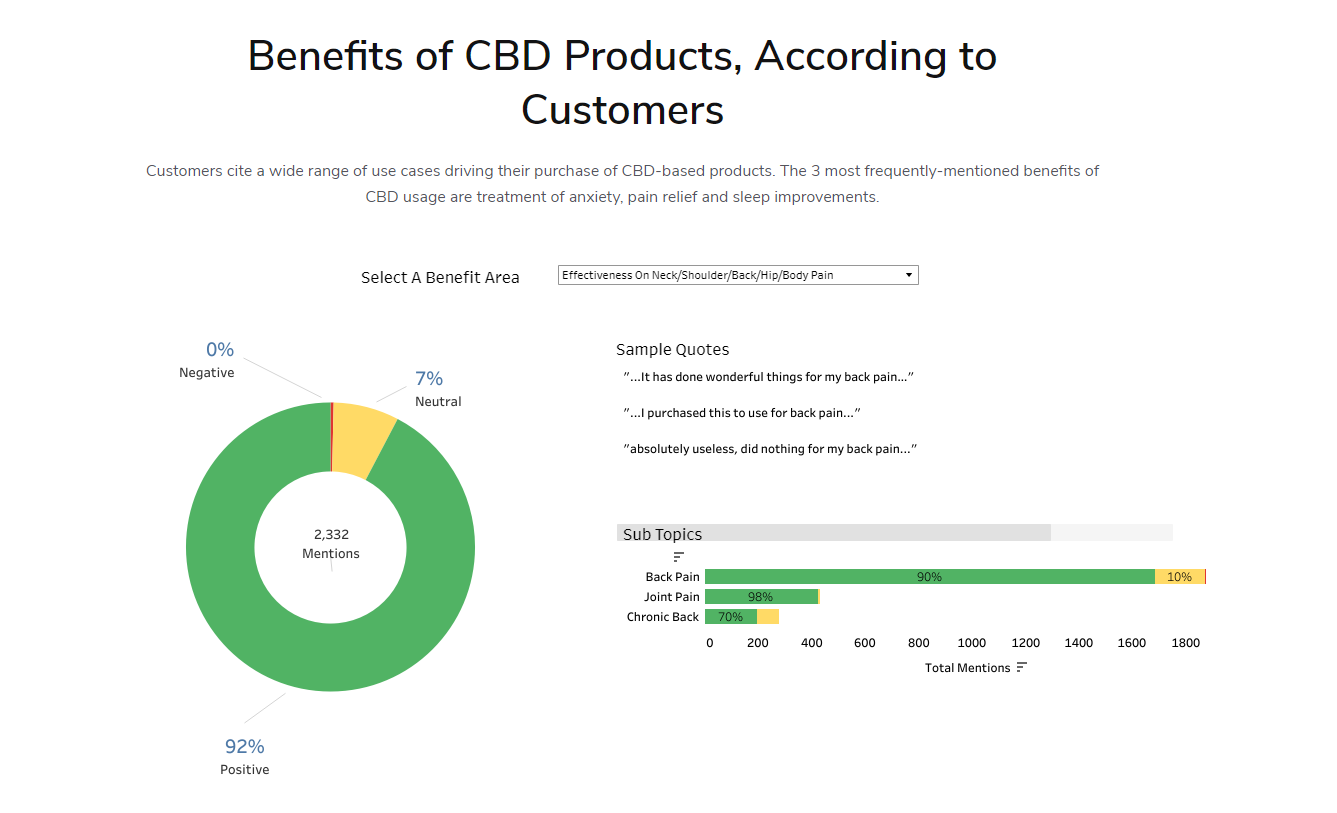Cannabidiol (CBD) has become one of the most emerging segments in the medical market and has captured the attention of the global consumer market within a short period. Constant shifts in customer needs and regulatory changes have made CBD one of the most dynamic market landscapes causing challenges for companies. With a significant consumer interest, CBD is turning it into a multi-billion-dollar industry on its own. Considering this strong consumer interest, if CBD companies or marketers manage to understand customer needs, strategize accordingly, and to leverage market opportunities. Before discussing in-depth on generating market insights, let’s discuss CBD and its benefits in detail.
What is CBD?
Cannabidiol (CBD) is the second most prevalent Cannabinoid, a type of chemical component extracted from Cannabis, a genus of flowering plants such as Hemp. The most popular Cannabinoid extracted from Cannabis is Delta-9-TetraHydroCannabinol or THC. Though both CBD and THC interact with the cannabinoid receptors in the body to treat various conditions, the lack of psychoactive effects is what differentiates CBD from TCH. In simple terms, THC mostly extracted from Marijuana, has intoxicating effects, whereas CBD is unlikely to cause such hallucinatory effects.
How CBD Products Works?
CBD produces effects in the body by interacting with two types of Cannabinoid receptors produced by our body, which form part of the endocannabinoid system.
CB1 receptors are present throughout the body, particularly in the brain. They co-ordinate movement, pain, emotion, mood, thinking, appetite, memories, and other functions.
CB2 receptors are more common in the immune system. They affect inflammation and pain.
CBD stimulates these receptors so that the body produces its own cannabinoids, known as endocannabinoids.
CBD Benefits
Growing research and development activities in recent times have helped in identifying the potential use of CBD in treating chronic pain, arthritis or joint pain, anxiety, and depression, PTSD, migraine, etc. While initially, CBD products were only available in oil form, now they are available in various edible formats such as drinks, bars, gummies, syrup, candies, and cookies. One new emerging trend is CBD infused food which has been catching up as a hot trend among chefs since 2019.
CBD Market
Based on a recent report by Grand View Research, the global market for CBD was estimated at USD 4.6 Billion in the year 2018 and is expected to reach USD 15.3 Billion by 2025 with a CAGR of 22.2%.

The market is highly competitive with continuous product and technological developments. Key factors driving the market include growing awareness of the merits of CBD, such as anti-inflammatory properties and other psychiatric benefits.
Understanding CBD Market and Customers
Customers drive the industry forward, especially when it’s an emerging market such as CBD. It is critical for businesses to understand their current and prospective consumers to be first to market while also capturing the consumer at their peak interest. As the market is still evolving, most brands tend to use their own customer data within their respective geographies such as sales and survey information to make market decisions. However, with limited sample size, this data is not truly representative of this rapidly moving market and can be inefficient in producing insights that would drive the brand towards success. Gaining a more global perspective on trends in the marketplace can help guide companies on growth trends and what’s to come.
Having data-driven insights on customer expectations is the key to CBD brands in developing marketing and sales strategies to prevail in this dynamic market. With the massive influx of consumers sharing their experiences using CBD products online, brands can leverage this data to understand ever-evolving customer expectations and pain points.

SetuServ’s VOCIS platform provides customer insights and market intelligence for the CBD and cannabis industry globally. It uses a proprietary text-mining algorithm that’s capable of extracting relevant customer conversations from online sources such as social media, e-commerce websites, blogs, and discussion forums. Insights can be viewed by various filters including geography, form, product, brand, etc. The platform employs AI-powered natural language processing (NLP) and sentiment analysis algorithms in uncovering deep insights on customer needs and gaps between customer expectation and realization. Combining these automated insights along with human SME intelligence, CBD insights helps brands to better understand the market landscape and navigate market challenges.
